Part One • Part Two • Part Three • Part Four • Part Five • Part Six • Part Seven
So far in our analysis of stock footage in End of an Era, we’ve seen Nicey meeting The Beatles and appearing on Blue Peter, and Smashie hamming his way through Dixon of Dock Green and Z-Cars. It’s all that kind of nonsense which sticks in the memory with the programme: big, showy, attention-grabbing comedy.
There’s a couple more sequences like that later on. But for now, we turn to the more prosaic use of stock footage in the show. How does the series portray Smashie and Nicey’s early days on pirate Radio Geraldine? Did they just grab a load of 60s footage of Radio Caroline?
* * *
(12:23) Newsroom South East • BBC1 • TX: 20th November 1991
…no, they bloody well did not.
When we first see Smashie and Nicey on Radio Geraldine, in all their tea-spilling glory, End of an Era does indeed use footage of a ship associated with Radio Caroline. But it wasn’t the Mi Amigo, which homed the station in the 60s; it was the Ross Revenge, which became the home of Caroline in 1983.
Not that End of an Era even used footage from 1983. Incredibly, it’s actually from 1991, two years or so before End of an Era aired, and the final days of the Ross Revenge as a seafaring vessel. And its original source was the BBC regional news programme Newsroom South East, and their report on some fairly dramatic events.
Guy Michelmore1 introduces the story:
“Coastguards have criticised the crew of the Radio Caroline ship for falling asleep while the vessel ran aground during the night. Two tugboats are standing by to try to refloat the Ross Revenge, until recently the home of the pirate radio station. Six crew members were airlifted to safety after the ship broke its anchor chains during heavy seas. It drifted for fifteen miles before running aground on the Goodwin Sands, off the coast of Kent.”
Two shots from the report were used. Firstly, this one to set the scene with Radio Geraldine:
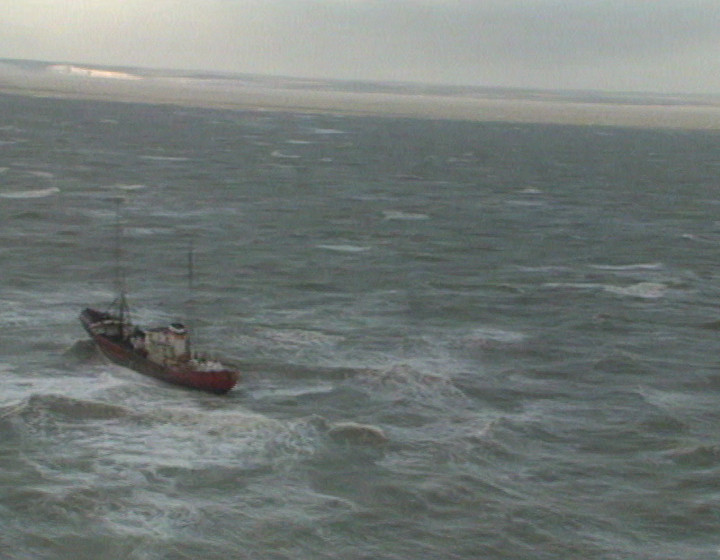
Newsroom South East
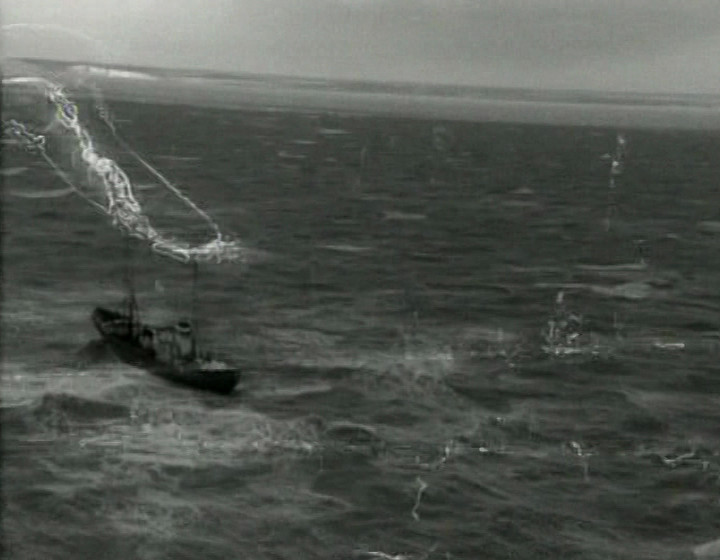
End of an Era
And secondly, this one to close the sequence, with Nicey screaming “Help!” over it:
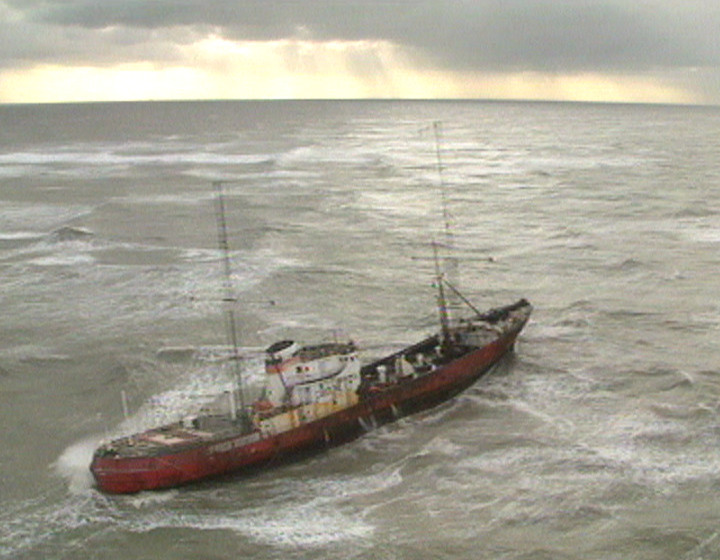
Newsroom South East
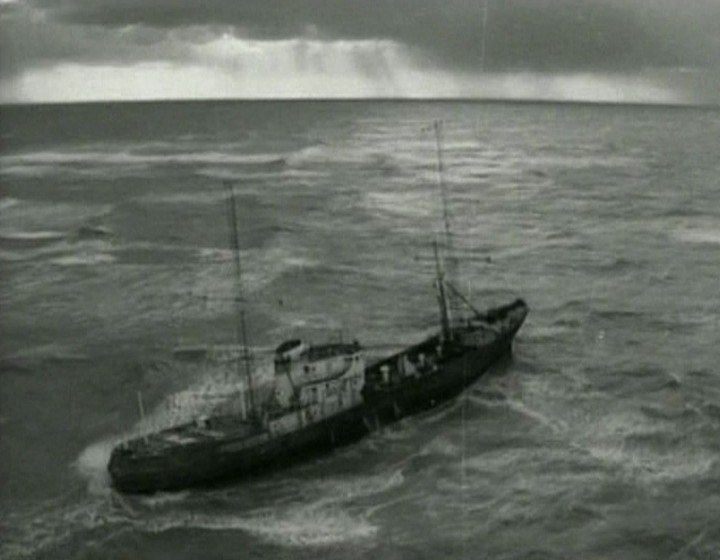
End of an Era
I have to say, I find the use of this footage genuinely surprising. I would have sworn that the two shots were of genuine pirate ships from the 60s, shot on film. To find out it was modern colour VT – changed to black and white, the frame rate halved, and fake film damage applied – is amazing to me. Such things are often done in such a fake, half-arsed, “jokey” manner; End of an Era manages to make it look wholly convincing.
There is also something deeply melancholy about a show called End of an Era – which isn’t just about the end of Smashie and Nicey, but is about the end of a certain strand of British culture full stop – using material which shows the end of an era for Radio Caroline, too.2
(13:17) One O’Clock News3 • BBC1 • TX: 26th March 1993
“Pirate radio really was phenomenally popular then”, intones Nicey, and we get one of the stupidest jokes in the whole programme: the waters crowded with a ridiculous number of pirate ships. Where could you possibly find footage like that?
Answer: they aren’t pirate ships, obviously. They’re fishing boats, with the footage taken from the One O’Clock News, this time only a year before End of an Era aired. The report was introduced by Philip Hayton, who oddly enough started his career as a pirate DJ in the 60s:
“150 fishing vessels are staging a blockade at Plymouth Sound4. It’s the biggest protest since the start of the current dispute, about cheap imports and new laws which will restrict fishing days. Early this morning, a French-owned Ferry, the Quiberon, abandoned attempts to get through the blockade, and was forced to divert to Poole in Dorset.”
Exactly the same trick is pulled with the pictures as with Newsroom South East, and so the joke is wholly convincing:
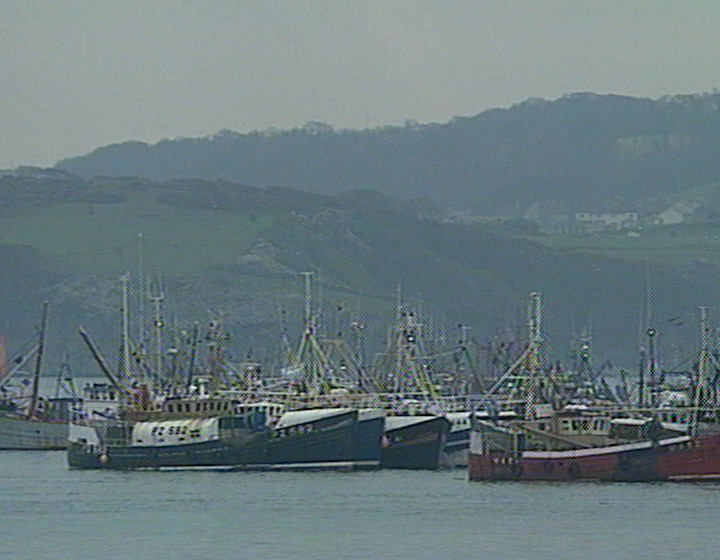
One O’Clock News
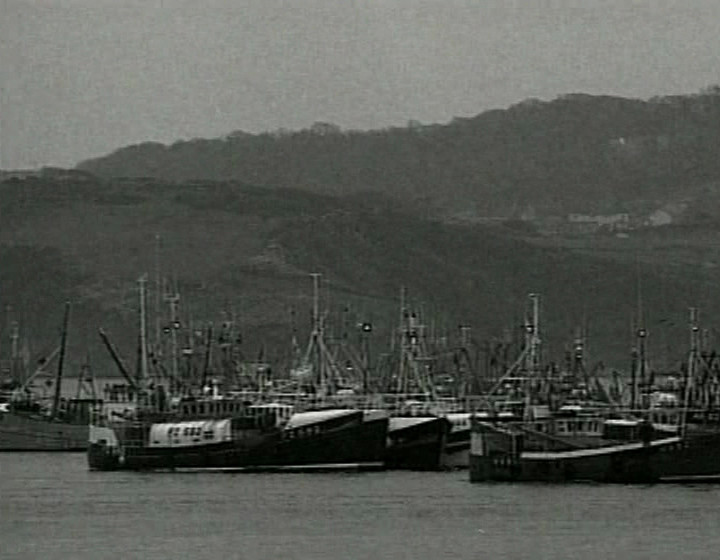
End of an Era
And the wider shot:
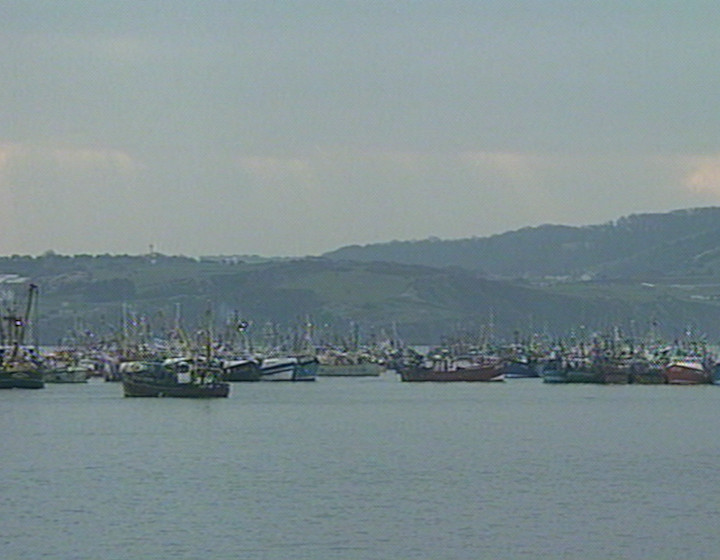
One O’Clock News
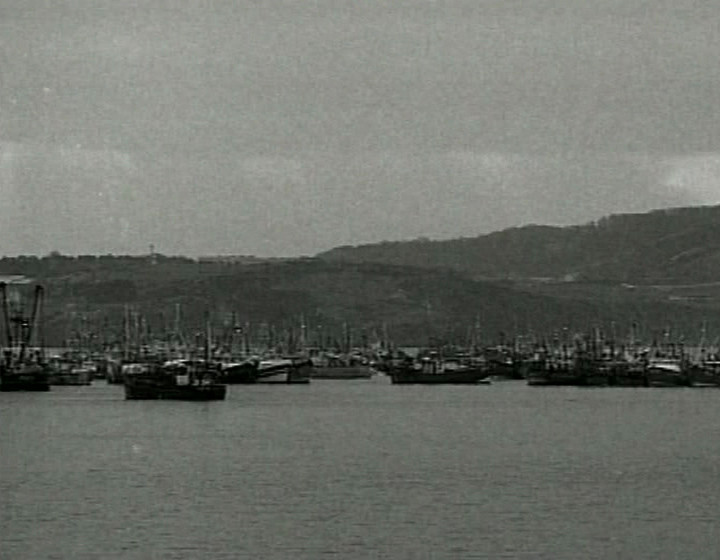
End of an Era
The advantage of using modern BBC news footage for these jokes rather than anything else: it was easily available, and it was free. And in the case of the Newsroom South East, it helps that there wasn’t huge CAROLINE lettering on the side of the ship; after all, this is supposed to be Radio Geraldine.
* * *
The next section of End of an Era uses a rather more obvious source for its stock footage. DJ Heaven was a 1993 BBC2 series which took a look at a different Radio 1 DJ each week. Or, as Andy Walmsley suggests: “an excuse to show clips from old editions of Top of the Pops with links from the DJ in question”.
Oddly enough, the series was never repeated, even back in the 90s, when it seems tailor-made as a schedule-filler. You’d struggle to repeat it now, mind you. I can’t resist a little episode guide:
| Episode | TX |
|---|---|
| Dave Lee Travis | 25/9/93 |
| Jimmy Savile | 2/10/93 |
| Tony Blackburn | 9/10/93 |
| John Peel | 16/10/93 |
| Simon Bates | 6/11/935 |
| Mike Read | 13/11/93 |
Before the Top of the Pops performances, each week’s show started with a little section about the featured DJ. End of an Era took material from two of these sections. Firstly:
(13:36) DJ Heaven, “Tony Blackburn” • BBC2 • TX: 9th October 1993
By far the most significant footage was taken from the Tony Blackburn episode. The opening of this show is sitting nicely on YouTube:
Three shots from the above are used in consecutively in End of an Era, at 2:08 into the video, to portray the launch of Radio Fab. The show also spliced in its own shot of the Radio Fab logo, to help sell the effect:
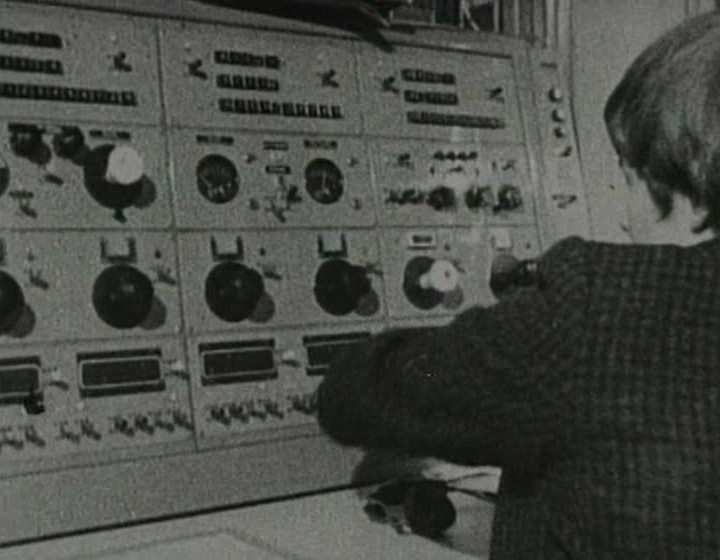
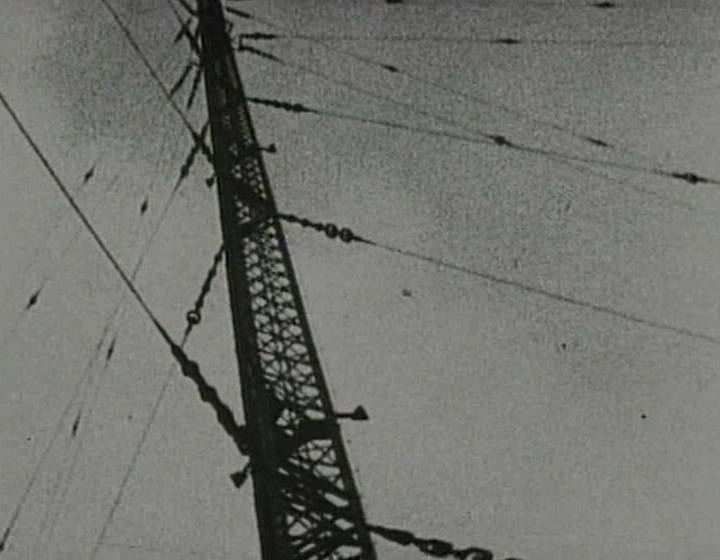
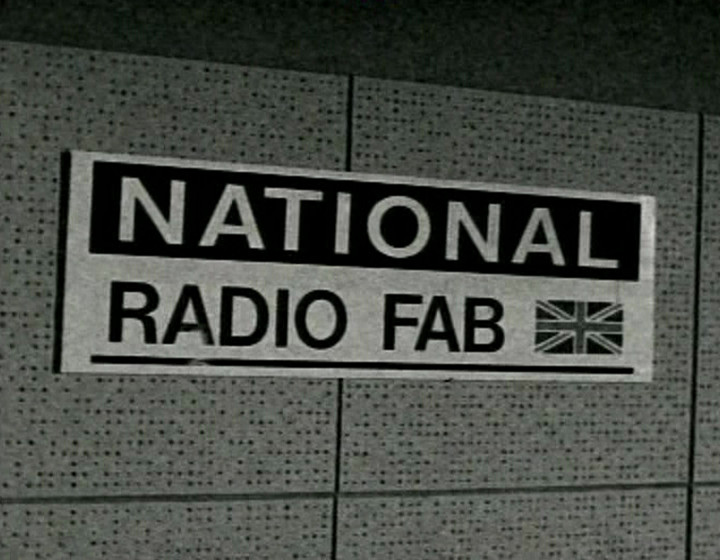
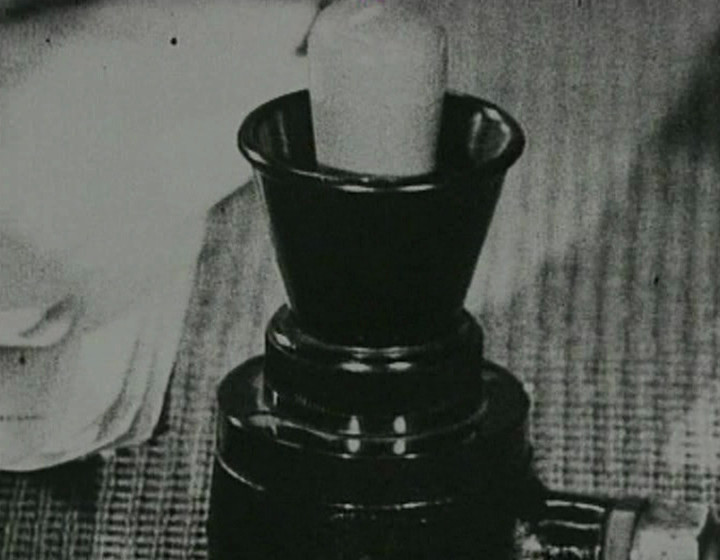
Of course, one of these shots is of Tony Blackburn himself, who shows up at the Radio Fab 25th anniversary party later on. “I’m the top disc jockey on Capital Old…”
But we’re cheating a bit here. Sure, End of an Era took these pictures from DJ Heaven, but where did that programme get them from? Well, we can trace them back one stage further: the documentary Radio Wonderful from 1974, which detailed the first few years of Radio 1. This was directed by Richard Loncraine, and the entire film can be viewed on his website; the footage we’re interested in is at 1:46.
And where did Radio Wonderful get this material from? At this point, I start feeling like I’m stuck in the stock footage equivalent of a Russian doll. I do know that the shot of the transmitter is also used in a BBC news report broadcast on 20th December 1966, about the very early plans for Radio 1. If you can identify the other two shots in any material earlier than 1974 and Radio Wonderful, please let me know.
Onto the other episode of DJ Heaven which concerns us. Who could it be?
(14:01) DJ Heaven, “Jimmy Savile” • BBC2 • TX: 2nd October 1993
Oh dear. It had to be Savile, didn’t it?
Luckily, we can dispose of this programme fairly quickly. Only one shot was used from it, of a turntable as Smashie cues up “Flowers in the Rain”. This is taken from a sequence with Jimmy Savile in the radio studio doing Savile’s Travels. Clearly, it was easier to simply use a stock shot of a retro turntable, than drag an old one out to put in the studio set.
Unusually though, End of an Era flips the image. Why?
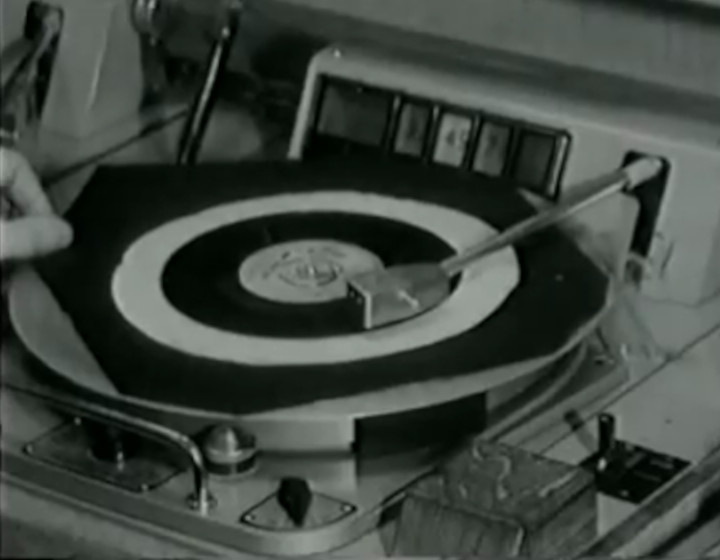
DJ Heaven
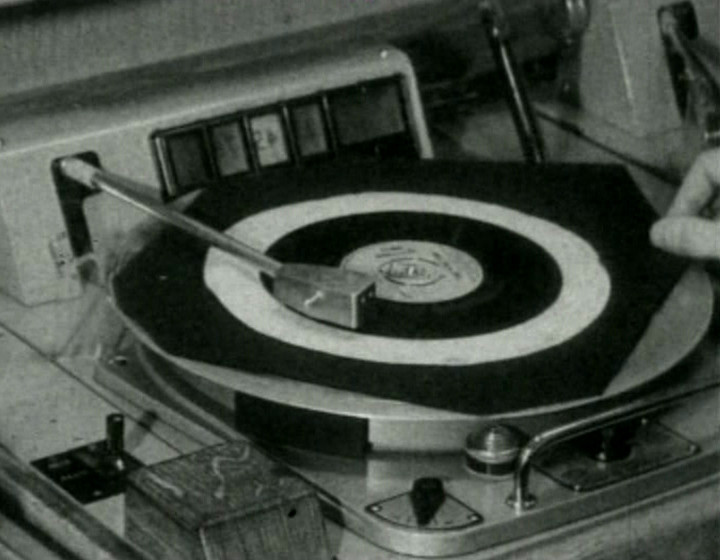
End of an Era
The answer is obvious if you look at the scene in context. Smashie reaches to the left of the picture in order to spin the turntable, so by flipping the image, the hand in the stock shot is in the right position:
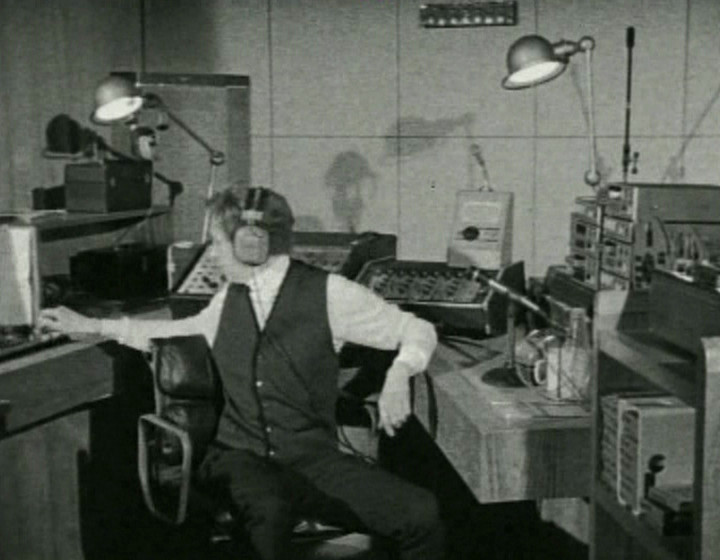

Clearly, the production thought that for such a short shot, it was more important to get Smashie’s hand in the right place than it was to worry about the turntable arm being in the wrong place. Or, indeed, that the record now turns in the wrong direction.
As for the shot’s original provenance, the clip in DJ Heaven was originally from Scene, a BBC1 programme for – oh dear again – Schools and Colleges. Transmitted on the 27th November 1969, this was titled “Personal View: Jimmy Savile”, and the Radio Times synopsis was as follows:
“Jimmy Savile earns enough money from one day’s work a week not to have to work on the other six days. How does he spend those six free days?”
I do not wish to know.6
* * *
Right, that’s quite enough Jimmy Savile. We need to get as far away from creepy stuff as possible. Join me next time for Smashie and Nicey’s DJ handover, where I’ll be staring at lots of footage of young women not wearing very much, and trying to find out as much as possible about it.
With thanks to Darrell Maclaine and Mike Scott for various bits of inspiration, Milly Storrington for archive research, and Tanya Jones as my usual unpaid editor.
UPDATE (14/5/24): Information about the stock shot of the turntable being flipped added, with thanks to Soundhog. No, I have no idea why I didn’t notice that before either. I blame wanting to get away from Savile as quickly as possible.
Who was also involved in his own hilarious drink-spilling incident. ↩
Although restoration work continues on the Ross Revenge, the 1991 accident caused so much damage that today it still isn’t considered seaworthy. ↩
This is in the paperwork as the Six O’Clock News, but one of the shots doesn’t quite match with the footage of the Six, but matches exactly with the One for the same day. ↩
An inlet near Plymouth. The obvious pun was irresistible for the local ILR station, which also called itself Plymouth Sound. ↩
The two week gap is because of snooker coverage. ↩
I have actually viewed the whole episode of Scene, and while the turntable shot is definitely from the sequence featuring Savile’s radio programme, it isn’t Savile’s hand in the shot used in End of an Era. So let’s be thankful for small mercies. ↩

2 comments
Kris Carter on 12 May 2024 @ 10am
The “using an old programme to use its own use of stock footage” is great.
Robocop: Prime Directive couldn’t afford to licence footage of Murphy’s murder from the original film. Instead it bought footage from the Robocop TV series… And then used the shows shots of the murder that were lifted from the earlier film instead.
John J. Hoare on 12 May 2024 @ 11am
Ha ha!
Speaking of Robocop, the film uses footage of the Challenger disaster in the opening titles of one of the news reports. I understand exactly what kind of film Robocop is, and I know you could easily make a satirical argument for its inclusion, but it still makes me a little queasy. Especially as Challenger was 1986, and Robocop was only 1987.
Comments on this post are now closed.